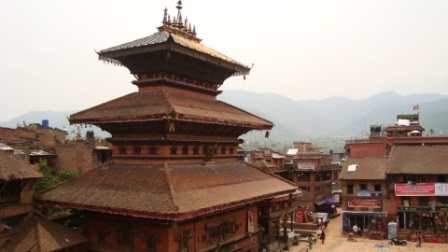Rough Political Waters

The recent political history of Nepal has been marked by violent struggle and failed attempts at establishing democracy. The most recent struggle was a ten year civil war that ended in 2006, and succeeded in removing the monarchy and establishing Nepal as a democratic state. Since that time, Nepal has been operating under an interim constitution and has been working toward writing a new constitution. The task of writing this constitution was given to the Constituent Assembly, who was elected in 2008. The original term for the Constituent Assembly was supposed to be two years, but numerous delays and extensions finally led the Supreme Court to announce a final deadline of May 27, 2012, and forbid any further extensions.
Since my arrival in Nepal, the political environment has been interesting to say the least. Two days after I arrived the Constituent Assembly failed to meet its deadline for agreeing on the new constitution. This failure has largely been blamed on parties putting off contentious issues until the last possible minute then failing to resolve the issues (Insert cheap shot at United States Congress here). At 11:30pm on May 27, with the deadline set to expire at midnight, the Prime Minister made an announcement dissolving the Constuent Assembly and calling for new elections on November 22. This announcement set off a firestorm of political attacks against the Prime Minister calling for his resignation. The primary complaints against the Prime Minister have been that he did not have to authority to dissolve the Constituent Assembly or call for election. These complaints are entirely unfounded.
The primary issue since the failure of the Constituent Assembly is that nobody that anticipated the failure. There is no provision in the interim constitution outlining what must be done in the event that a new constitution was not agreed upon. In one of the first meetings I went to here, a man I spoke to, who was working for an outside group helping with the constitution, said that they were prepared for virtually any result but not for the possibility that the Constituent Assembly would fail to produce a constitution. The failure to anticipate this outcome has created a kind of vacuum that has led to many unanswered questions. Perhaps most important among these is who now has the power to govern. The President has said that the Prime Minister must continue to run a care taker government. The problem is that nobody has a clear idea of how much power that gives to the Prime Minister. There are also those who are saying that the Prime Minister's cabinet is no longer a legitimate governing body. Most of the opposition parties are calling for a unity government including all of the major political parties. The other major unresolved question is how to get the constitution writing process started again. There have been a number of proposals put forward, but again there has been no agreement on any one proposal and the interim constitution does not provide any guidance.
Although these issues present major problems for Nepal, there are a few positives that have come out of this. First, even though the parties are having major disagreements on the way forward, they are still maintaining communication with each other and all seem dedicated to seeing the constitution writing process resumed. Second, the reaction to the failure of the Constuent Assembly among the public has been anger and frustration, but has been largely peaceful. There was initially a fear of widespread violent protests, but for the most part this has not been the case. This shows a certain level of maturity for Nepal's young democracy in that they continued to seek political solutions to this set back rather than turning to violent means. This is an encouraging development.